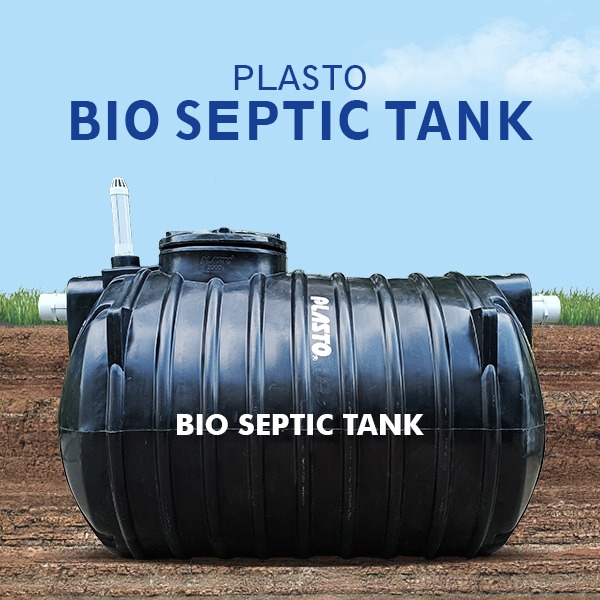Plasto Bio-Septic Tank

Introduction
A Plasto bio septic tank is a type of septic tank designed for the treatment and disposal of wastewater in residential and commercial settings. These septic tanks are made from plastic, typically high-density polyethylene (HDPE), which is a durable and corrosion-resistant material.
The “bio” in Plasto bio septic tank refers to the biological treatment process that takes place within the tank. Septic tanks are a key component of decentralized wastewater treatment systems and are commonly used in areas without access to centralized sewer systems.
Working of Plasto Bio-Septic Tank
Collection of Wastewater: Wastewater from toilets, sinks, showers, and other plumbing fixtures is collected and directed into the septic tank.
Settlement: Inside the septic tank, solids and liquids in the wastewater separate through a process called sedimentation. Heavier solids settle to the bottom of the tank, forming a layer of sludge. Lighter materials, such as grease and oils, float to the top, creating a scum layer.
Biological Treatment: In the middle layer between the sludge and scum layers, a zone of relatively clear water forms. This water undergoes a natural biological treatment process. Bacteria and other microorganisms break down and digest organic matter in the wastewater, reducing its pollutant content.
Effluent Discharge: The treated wastewater, now called effluent, exits the septic tank and enters a drain field or leach field. This is a subsurface system of perforated pipes or chambers buried in the soil. The effluent slowly percolates through the soil, where additional natural processes further treat and purify it before it returns to the groundwater.

